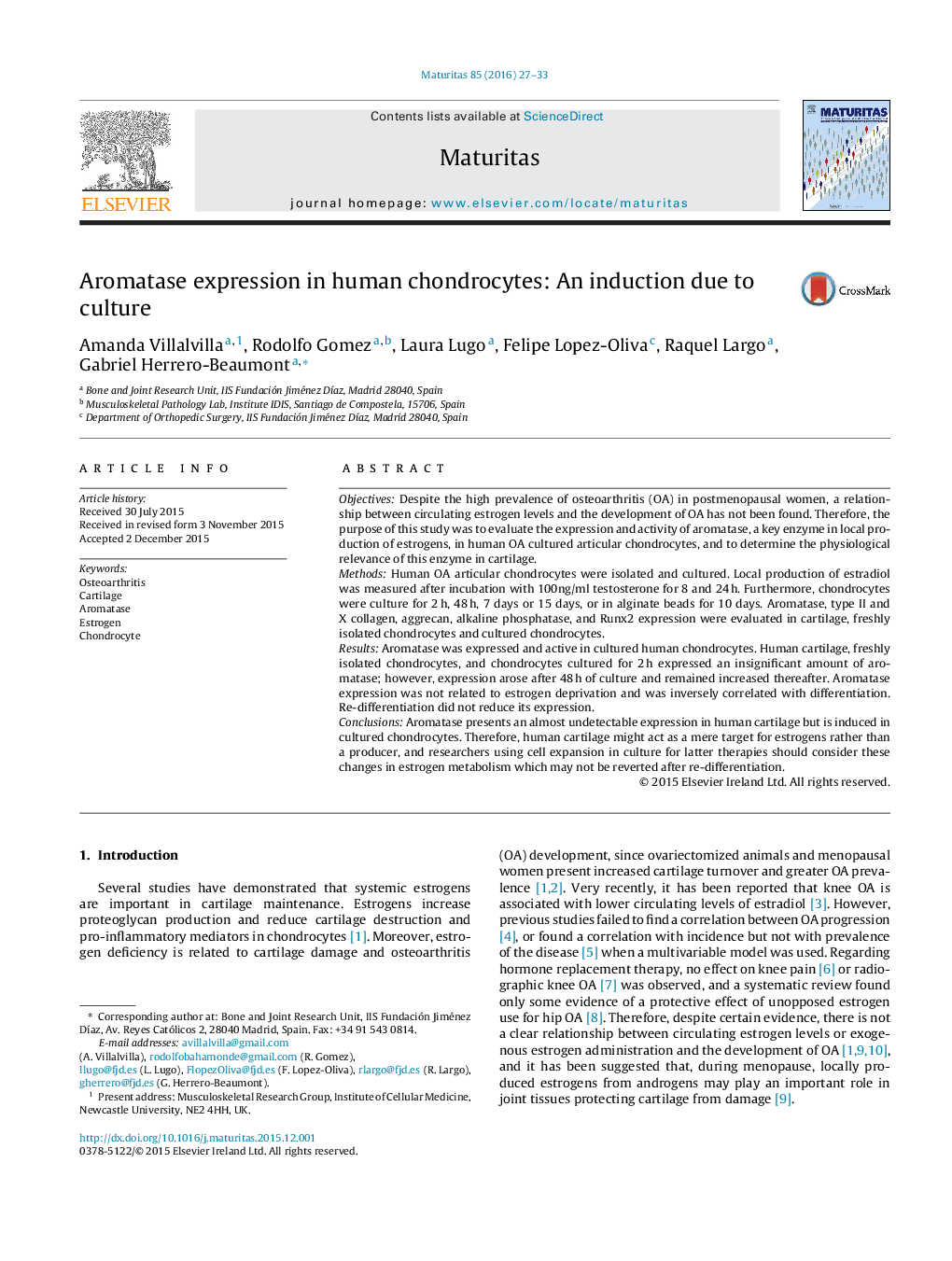| کد مقاله | کد نشریه | سال انتشار | مقاله انگلیسی | نسخه تمام متن |
|---|---|---|---|---|
| 1917068 | 1535302 | 2016 | 7 صفحه PDF | دانلود رایگان |
• Aromatase presents an almost undetectable expression in human cartilage.
• Culturing chondrocytes induces aromatase expression.
• Aromatase expression in chondrocytes is associated with de-differentiation.
ObjectivesDespite the high prevalence of osteoarthritis (OA) in postmenopausal women, a relationship between circulating estrogen levels and the development of OA has not been found. Therefore, the purpose of this study was to evaluate the expression and activity of aromatase, a key enzyme in local production of estrogens, in human OA cultured articular chondrocytes, and to determine the physiological relevance of this enzyme in cartilage.MethodsHuman OA articular chondrocytes were isolated and cultured. Local production of estradiol was measured after incubation with 100ng/ml testosterone for 8 and 24 h. Furthermore, chondrocytes were culture for 2 h, 48 h, 7 days or 15 days, or in alginate beads for 10 days. Aromatase, type II and X collagen, aggrecan, alkaline phosphatase, and Runx2 expression were evaluated in cartilage, freshly isolated chondrocytes and cultured chondrocytes.ResultsAromatase was expressed and active in cultured human chondrocytes. Human cartilage, freshly isolated chondrocytes, and chondrocytes cultured for 2 h expressed an insignificant amount of aromatase; however, expression arose after 48 h of culture and remained increased thereafter. Aromatase expression was not related to estrogen deprivation and was inversely correlated with differentiation. Re-differentiation did not reduce its expression.ConclusionsAromatase presents an almost undetectable expression in human cartilage but is induced in cultured chondrocytes. Therefore, human cartilage might act as a mere target for estrogens rather than a producer, and researchers using cell expansion in culture for latter therapies should consider these changes in estrogen metabolism which may not be reverted after re-differentiation.
Journal: Maturitas - Volume 85, March 2016, Pages 27–33
